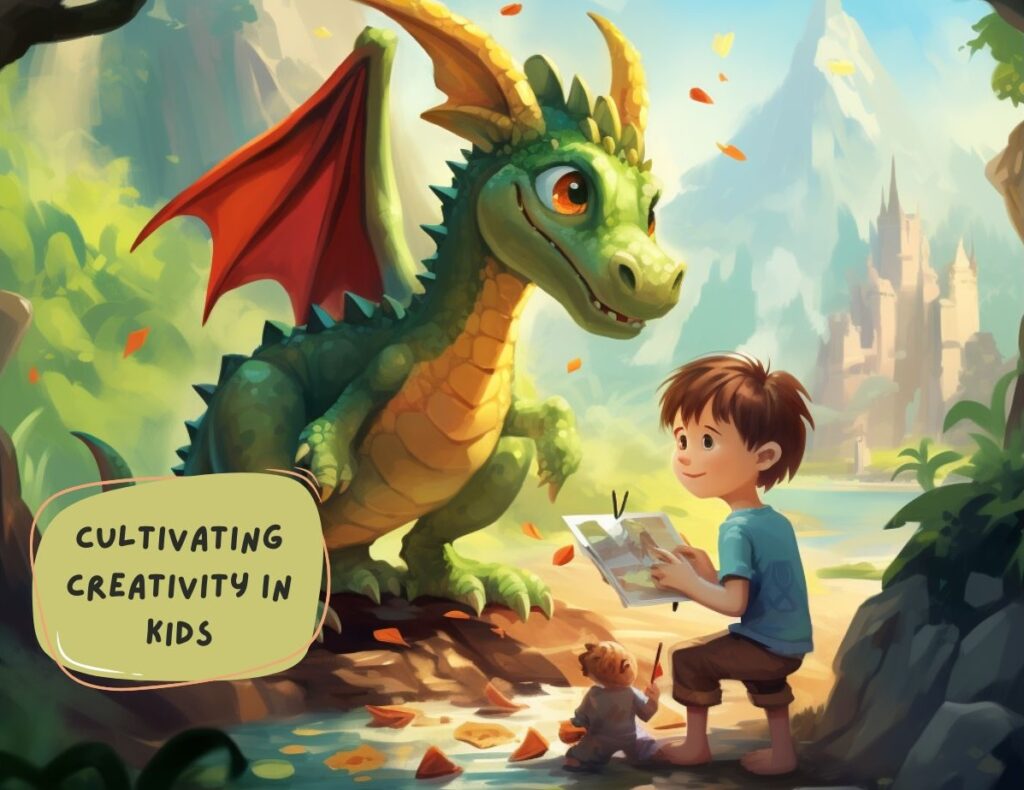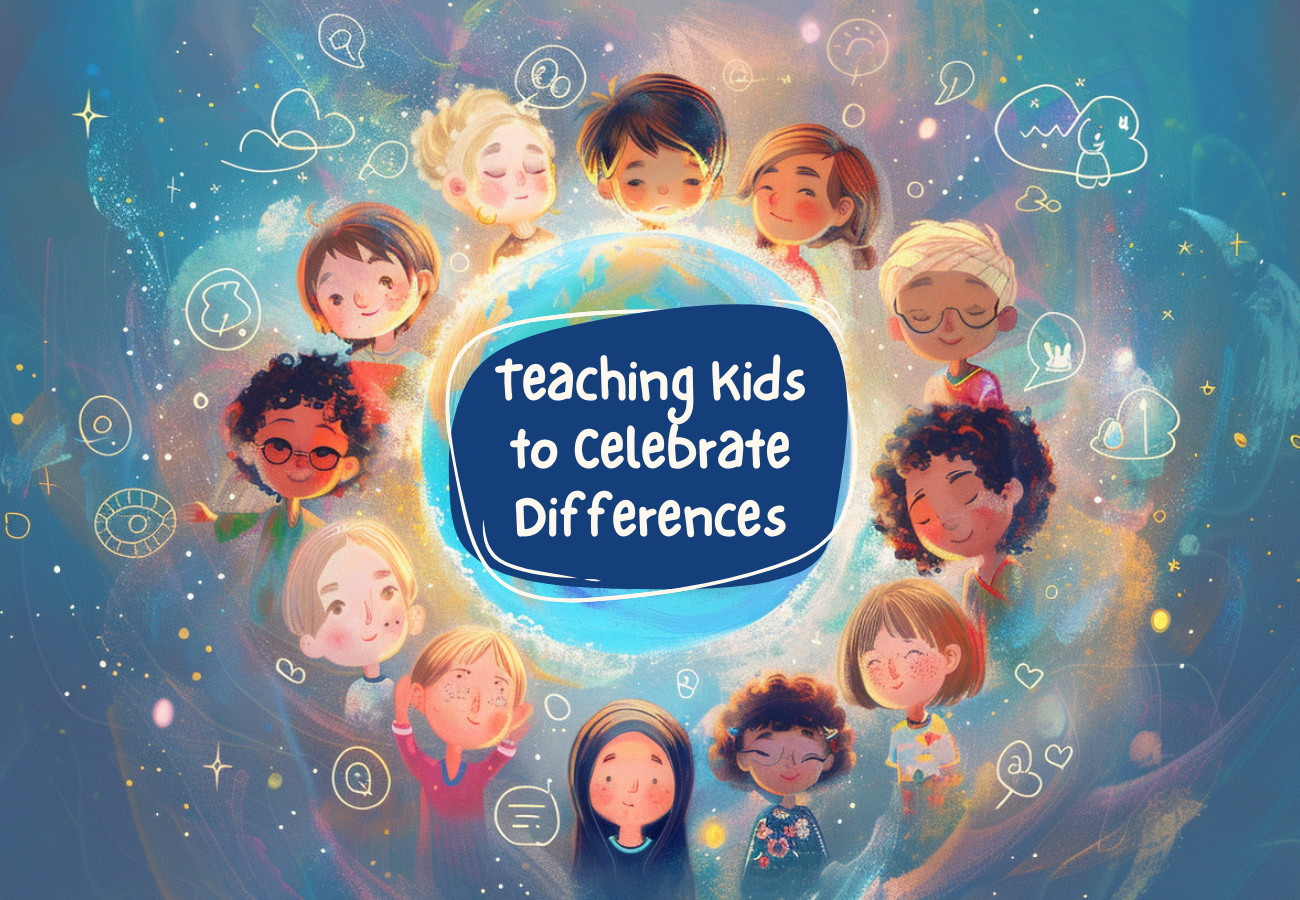Cultivating Creativity in Kids: A Practical Guide for Parents and Educators

In the vibrant world of early childhood, sparking creativity is like planting seeds for a blossoming future. This article dives into hands-on strategies and playful activities that parents and educators can use to nurture creativity in preschoolers, emphasizing the joy of learning through exploration.
Why Creative Play Matters
In the enchanting world of childhood, where curiosity dances with imagination, creativity takes center stage as a powerful force that extends far beyond the confines of early play. Instead of delving solely into research, let’s embark on a journey to understand how fostering creativity in the formative years becomes a gateway to invaluable life skills, shaping the trajectory of children well into adulthood.
Adventurous Spirit
Picture a child lost in a world of colors, shapes, and endless possibilities—this is the enchanting realm of creative play. It’s not just about whimsical stories or building towering block castles; it’s about cultivating a mindset that thrives on exploration and innovation. By providing unstructured playtime filled with a kaleidoscope of toys and materials, parents and educators create a magical adventure where the seeds of creativity are sown deep within a child’s psyche.
Adaptive Thinking
Research by the American Psychological Association (APA) emphasizes that fostering creativity in childhood is linked to the development of adaptive thinking skills—skills crucial for navigating the ever-evolving landscape of adulthood. When children engage in creative play, they learn to adapt, experiment, and find innovative solutions, laying the foundation for resilience and versatility in their approach to challenges throughout life.
Problem-Solving as a Life Skill
Creative play is not just an ephemeral escape; it’s a laboratory for problem-solving, a skill that becomes indispensable in the adult world. According to studies published in the Journal of Educational Psychology, individuals who engage in creative problem-solving during childhood are more likely to exhibit resilience and effective decision-making as adults.
Building Confidence and Self-Expression
The magic of creative play extends beyond the tangible creations; it’s a space where children build confidence in expressing their unique selves. The creative process, whether through art, imaginative play, or storytelling, becomes a canvas for self-expression. This confidence becomes a cornerstone for effective communication and collaboration in adulthood, fostering healthy relationships and professional success.
In essence, the magic of creative play is not a fleeting moment but a catalyst for lifelong skills that shape individuals into adaptive, resilient thinkers. By embracing and nurturing creativity in the early years, parents and educators contribute to the development of individuals who not only navigate the challenges of adulthood with grace but also infuse their journey with the magic of innovation and imagination.
How to Depelop Creativity in Kids with Examples
Doodle, Paint, and Craft Away
Artistic expression is more than just a pretty picture; it’s a canvas for cognitive growth. By providing a spectrum of art supplies and letting kids freely experiment with colors and shapes, we’re not just creating masterpieces but fostering decision-making skills too.
Nature’s Playground for Young Explorers
Collecting leafs, rocks, and experiencing the outdoors isn’t just about scientific findings; it’s about creating a sense of wonder that sparks creativity.
Dance to the Beat of Creativity
Music and movement aren’t just scholarly subjects; they’re the rhythm of joy. Dance, sing, and let kids explore their beats – it’s not about studies, but the sheer delight of expression and coordination.
Storytelling and Reading: A Journey into Imagination
Reading is not merely about words on a page; it’s a gateway to worlds unexplored and characters waiting to come to life. To cultivate creativity in preschoolers through storytelling and reading, the emphasis goes beyond the act itself, delving into the realms of exposure, exploration, and imaginative creation.
Beyond being passive recipients of stories, children should be encouraged to become storytellers themselves. Research conducted by Dr. Mary Renck Jalongo (2019) highlights that engaging in storytelling not only enhances language proficiency but also stimulates creative thinking. By allowing children to create their narratives and characters, parents and educators provide them with a platform for self-expression, fostering the development of their unique creative voices.
Problem-Solving Activities: Nurturing Little Innovators
In the dynamic world of early childhood, problem-solving activities act as catalysts for the development of critical thinking skills and the cultivation of a resilient and innovative mindset.
- Puzzles: Building Cognitive Foundations
The inclusion of puzzles in a child’s playtime is more than just assembling pieces; it’s a strategic exercise for the mind. Research published in the Journal of Educational Psychology (Van de Vijver et al., 2015) suggests that puzzle-solving enhances cognitive abilities, spatial awareness, and pattern recognition. Integrating puzzles into a child’s routine not only sharpens their critical thinking skills but also provides a sense of accomplishment, boosting confidence.
- Building Blocks for Creative Construction
Beyond the simplicity of stacking blocks lies the profound impact on a child’s problem-solving prowess. Research by Dr. Amanda Moreno (2019) suggests that playing with building blocks develops spatial skills, promotes creativity, and enhances mathematical thinking. By providing a diverse set of building materials, parents and educators lay the groundwork for spatial exploration and imaginative construction, fostering a holistic approach to problem-solving.
- Brainstorming and Multiple Solutions
The ability to navigate challenges with creativity is a valuable life skill. According to research in the Journal of Experimental Child Psychology (Lucas & Norbury, 2014), fostering an environment where children can brainstorm and explore multiple solutions to challenges enhances their flexibility of thought and adaptability. Encouraging this open-ended approach to problem-solving not only sharpens cognitive abilities but also instills a resilient mindset, preparing children for the complexities of the future.
In essence, storytelling and problem-solving activities transcend the realm of mere activities; they are pivotal components of a child’s cognitive, emotional, and creative development. By immersing children in a diverse literary landscape and providing them with opportunities to tackle challenges creatively, parents and educators sow the seeds for a future generation of imaginative thinkers and innovative problem solvers.
Balancing Act: The Science Behind a Well-Rounded Approach
In the intricate dance of fostering creativity in preschoolers, research-backed evidence sheds light on the importance of striking a balance between structured learning and unbridled free play. Studies conducted by Dr. Roberta Golinkoff and Dr. Kathy Hirsh-Pasek (2018) emphasize that while structured activities contribute to cognitive development, unstructured play is equally vital for nurturing creativity.
Structured learning, encompassing activities like puzzles, building blocks, and educational games, provides children with valuable cognitive tools. According to research published in the Journal of Applied School Psychology (Graves & Valentine, 2016), such activities not only enhance problem-solving skills but also foster a sense of achievement, building confidence and resilience.
However, it’s equally crucial to recognize the significance of free play in the creative equation. The American Academy of Pediatrics (AAP) underscores the importance of unstructured playtime in a child’s day, emphasizing its role in developing social skills, emotional intelligence, and imaginative thinking.
Dr. Golinkoff and Dr. Hirsh-Pasek’s research further emphasizes that a balanced approach is not a one-size-fits-all formula. Each child has a unique creative journey, and finding the right mix involves understanding their individual preferences, interests, and learning styles.
Structured activities provide a framework for learning specific skills, while free play allows children to apply and expand upon these skills in a more spontaneous and creative manner. It’s not a matter of pitting one against the other; rather, it’s about creating an environment where both structured and unstructured experiences coexist harmoniously.
In essence, the “Balancing Act” is not merely a subjective notion – it is grounded in scientific findings that highlight the symbiotic relationship between structured learning and free play in fostering a well-rounded creative development. By integrating both aspects, parents and educators can effectively cater to the diverse needs of individual children, ensuring a holistic and enriching early learning experience.
Conclusion
In the realm of early childhood, cultivating creativity isn’t about scientific theories; it’s about creating a world where kids can explore, play, and imagine freely. By embracing these practical strategies and playful activities, parents and educators can fuel the creative spark in preschoolers, sowing the seeds for a future filled with innovation and joyous learning.
More articles

Helping Kids Who Struggle to Sit Still and Stay Calm
Some children move through the world with nonstop energy that rarely seems to slow down. They bounce, fidget, tap their feet, or speak out when quiet is expected. These behaviors can feel overwhelming for parents, teachers, and caregivers trying to create calm. Is the child being defiant or simply overstimulated? Are they anxious, under-challenged, or […]

Teaching Kids to Celebrate Differences Through Books
Why Books Matter in Teaching Kids About Differences Teaching kids to celebrate differences through books is one of the most effective and natural ways to build a more inclusive future. Stories have long served as windows into other lives, cultures, and perspectives. When children read books that highlight diversity, inclusion, and empathy, they begin to […]

How Technology Can Empower Your Kids to Learn, Grow, and Thrive
Technology often gets a bad rap when it comes to its effects on children, including issues related to screen time, cyberbullying, and online distractions. While these concerns are valid, these misconceptions should not overshadow its incredible potential to enhance education, creativity and well-being for your child when used responsibly and mindfully. When used appropriately, technology […]



